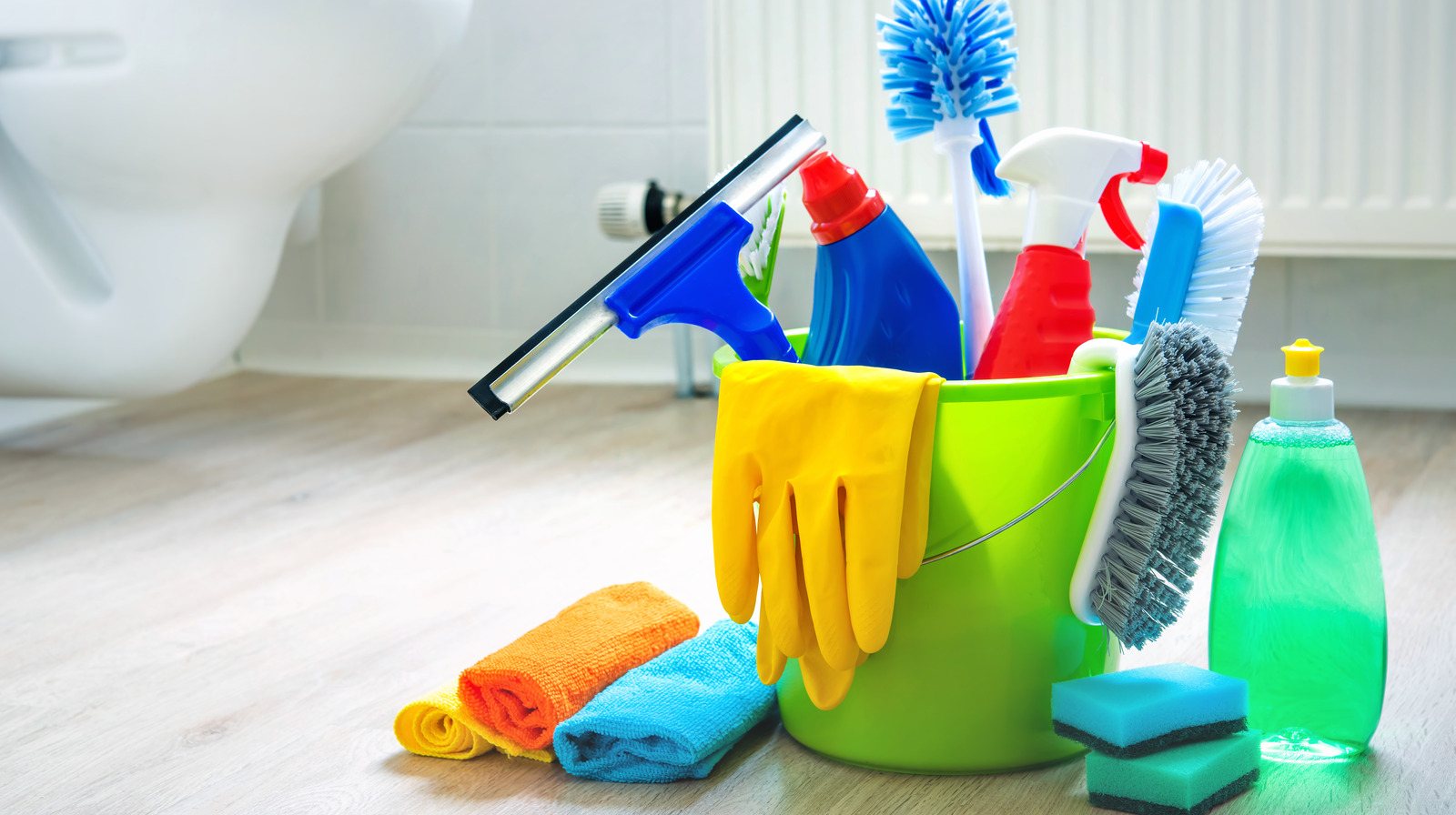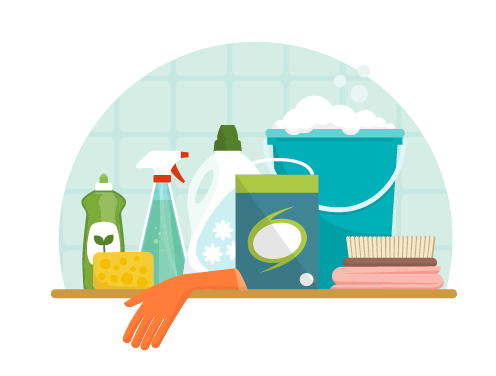Vital Tips for Everyday Cleaning: How to Defrosted and Cleaned Every Few Months for a Fresh Home
Vital Tips for Everyday Cleaning: How to Defrosted and Cleaned Every Few Months for a Fresh Home
Blog Article
Recognizing the Requirement for Completely Decontaminating and Disinfecting Frequently Touched Surfaces in High-Traffic Locations
In the world of public wellness and security, the careful disinfection and sanitization of often touched surfaces in high-traffic areas stand as vital procedures in avoiding the spread of hazardous pathogens. The importance of this method prolongs far past simple tidiness, diving right into the realm of illness avoidance and community health. By checking out the numerous facets of surface disinfection, from the threats related to neglecting cleansing methods to the efficient methods that can be employed, a clearer understanding arises of the crucial function these techniques play in securing public wellness. As we browse this conversation, it comes to be apparent that the ramifications of detailed surface area disinfection reverberate not only within the boundaries of a specific environment but also resonate on a wider scale, affecting the health and wellness of people throughout varied public settings.
Significance of Surface Disinfection
Highlighting the complete sanitation of high-traffic surfaces is essential in preserving a hygienic environment and preventing the spread of harmful virus. High-touch surfaces such as door takes care of, light buttons, lift switches, and countertops work as reproducing grounds for infections and microorganisms. Routine sanitation of these surfaces is crucial to minimize the threat of contamination and transmission of diseases.
By implementing a durable sanitation method, establishments and services can produce a much safer atmosphere for workers, site visitors, and consumers. Proper surface area disinfection not only mitigates the spread of contagious illness but also infuses confidence in the cleanliness and safety of the premises. This aggressive technique demonstrates a dedication to health and wellness, which is especially important in high-traffic locations where the probability of direct exposure to pathogens is enhanced.
Moreover, surface disinfection plays a vital function in overall infection control approaches. Combined with hand health practices, using masks, and preserving physical distancing, detailed sanitation of high-touch surface areas develops a detailed defense versus the transmission of dangerous microbes. Focusing on surface area sanitation is an essential element of a holistic technique to health and wellness in common areas.
Risks of Disregarding Cleaning Practices
Overlooking comprehensive sanitation of high-traffic surface areas substantially enhances the threat of viral and bacterial contamination, presenting a major hazard to the wellness and safety of individuals often visiting these areas. Failure to execute appropriate cleaning techniques can lead to the accumulation and spread of hazardous pathogens, consisting of bacteria and infections, on often touched surfaces such as doorknobs, handrails, elevator switches, and countertops.

In addition, overlooking the relevance of detailed cleansing not only compromises the well-being of people yet additionally threatens initiatives to maintain a sanitary and tidy environment. It is critical to recognize the significance of proper disinfection methods in avoiding the spread of infections and securing public wellness.
Effective Sanitation Methods
To maintain ideal sanitation and minimize the risk of contamination on high-traffic surface areas, using effective sanitation approaches is important. One of the most common and effective sanitation methods is utilizing chemical disinfectants.
An additional effective approach is the usage of UV-C light. UV-C light has actually been revealed to be effective in eliminating a large array of bacteria by disrupting their DNA framework, thus stopping them from replicating. Nevertheless, it is vital to use UV-C light properly, making sure that the proper strength and direct exposure time are put on achieve the wanted disinfection results.
Furthermore, using heavy steam cleaning as a sanitation method can be extremely effective, especially on surface areas that are heat-resistant. Steam can penetrate permeable surfaces and kill germs, infections, and various other virus efficiently. When utilizing heavy steam cleansing, it is essential to ensure that the surface gets to the required temperature for an enough my review here quantity of time to assure proper disinfection.
Influence On Public Wellness
The upkeep of high standards of tidiness and disinfection on high-traffic surfaces plays a crucial role in protecting public health and wellness. Often touched surface areas in areas with high step, such as doorknobs, hand rails, elevator buttons, and bathroom centers, work as reproducing grounds for dangerous virus. Failing to adequately decontaminate these surface areas can result in the fast spread of infectious conditions within communities. By carrying out complete sanitation protocols, the threat of transmission of infections, bacteria, and other bacteria can be significantly lowered.
In high-traffic locations like airport terminals, colleges, health centers, and public transportation systems, the effect of extensive sanitation steps can not be underrated. Focusing on the sanitization of often touched surface areas is an aggressive method to advertising public wellness and boosting the safety of people in common spaces.
Executing Regular Cleaning Up Protocols
Immediately setting up and sticking to a consistent schedule of cleansing protocols is vital for maintaining the visit this site right here cleanliness and safety of high-traffic surface areas. Normal cleaning protocols are important in avoiding the build-up of germs and virus on frequently touched surfaces, specifically in areas with high foot website traffic. By applying a methodical technique to cleaning, organizations can effectively minimize the risk of disease transmission and develop a much healthier environment for staff members, clients, and the public.
To develop a reliable cleaning schedule, it is critical to recognize high-traffic locations that require frequent focus. These locations might consist of doorknobs, handrails, lift buttons, washroom centers, and shared tools. Executing a routine cleansing regimen that targets these surfaces numerous times a day can dramatically minimize the spread of damaging germs and viruses.
Moreover, utilizing ideal cleansing agents and anti-bacterials is essential to guaranteeing that surface areas are thoroughly sterilized. Regular training Full Report of cleaning personnel on proper cleaning techniques and the relevance of adherence to the cleaning routine is also essential in maintaining a hygienic environment. By prioritizing consistent cleaning protocols, companies can promote the health and wellness and well-being of people that connect with these high-traffic surface areas.

Final Thought
Finally, it is essential to prioritize comprehensive disinfection and sanitization of often touched surface areas in high-traffic locations to avoid the spread of damaging microorganisms and maintain public health and wellness. Overlooking appropriate cleaning methods can boost the danger of contamination and transmission of illness. By carrying out normal cleaning methods and using effective sanitation approaches, we can create a safer setting for everyone (Scrub the Surfaces). It is critical to identify the importance of maintaining clean surface areas in high-traffic locations to ensure the health of the area.
In the world of public health and wellness and safety, the careful disinfection and sanitization of regularly touched surfaces in high-traffic areas stand as critical actions in preventing the spread of harmful pathogens. By discovering the different aspects of surface disinfection, from the threats associated with ignoring cleansing methods to the reliable techniques that can be employed, a more clear understanding emerges of the essential role these methods play in protecting public wellness.In addition, employing heavy steam cleansing as a sanitation technique can be highly reliable, specifically on surfaces that are heat-resistant. When using steam cleaning, it is crucial to ensure that the surface reaches the needed temperature level for an adequate quantity of time to assure proper sanitation.
In verdict, it is essential to focus on detailed sanitation and sanitization of often touched surface areas in high-traffic locations to stop the spread of harmful microorganisms and preserve public health.
Report this page